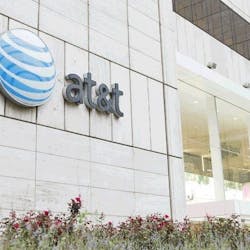French company Orange Business Services has announced several joint innovation projects to develop future uses of 5G wireless techology, which Orange Group Chairman and CEO Stephane Richard says is a "technological leap that announces a significant transformation of business models for all companies."
"5G will enable our B2B clients to move toward the real-time enterprise where data is consumed at the same moment as it is produced. 5G will support changes in Internet usage, opening a new world of possibilities for a range of business sectors … thanks to the combination of superheated broadband, very low latency, very high reliability and more globally, the flexibility to adapt to enterprises' individual traffic requirements," Orange Business Services says.
The businesses Orange is working with as part of its "aggressive co-innovation approach" are from sectors ranging from manufacturing to energy and transportation.
The LACROIX Group, for example, will examine how 5G can benefit Symbiose, which is a prototype factory project. Together with Orange, the company will test ambient connectivity on an industrial site and whether production can be optimized using automated vehicles connected by 5G.
With Schneider Electric, Orange is working on the opportunities 5G could bring to industrial production processes. By the end of 2019, there will be a test to evaluate 5G for real-time augmented reality (AR) solutions, like those used by maintenance technicians at the Schneider Electric factory. This allows for instant diagnosis and contactless maintenance by enabling operators to superimpose current data and virtual objects onto a cabinet, machine or plant, Orange says. 5G will bring high throughput and low latency to improve the end-user experience.
Renault and Ericsson are teaming with Orange on connected vehicles. They will measure how 5G will help with communication between vehicles and traffic lights, road users, and other vehicles. The hope is that more data will allow traffic to keep moving and will improve road safety. The plan is to run performance tests on a system based on a hybrid vehicle-to-anything (V2X) architecture, including mobile edge computing technologies (to improve cloud performance) and network slicing, which is a feature of 5G that assigns a slice of throughput to a specific use. By isolating the traffic on these "slices," the variations on one slice do not affect the SLA on other slices that are using the same infrastructure, Orange says. This allows 5G to support a range of use cases that have diverse requirements.
The autonomous vehicles are being tested first at a complex in Montlhery, which has three environments, including city, highway, and rural. Testing will continue there in preparation for testing in an open public area that will begin by the end of 2020 or start of 2021. Orange is part of a European project called 5GCroco. Tests will be performed on highways and across borders between France, Germany and Luxembourg.
For another type of transportation, Orange, SNCF and Nokia will launch a high-speed HD video download service for passengers at the Rennes train station in 2020, once the French regulator Arcep authorizes the project. With 5G technology, passengers can download videos in a few seconds for viewing during their train journey.
RATP, which is the transport operator in Paris, will launch with Orange a 5G experiment for autonomous and connected public transport vehicles in Paris during 2019. And on its own, Orange Group is implementing its 5G deployment strategy, which involves installing 5G connections in 17 towns in Europe during 2019.





